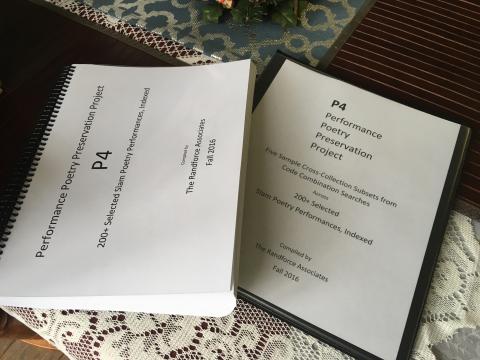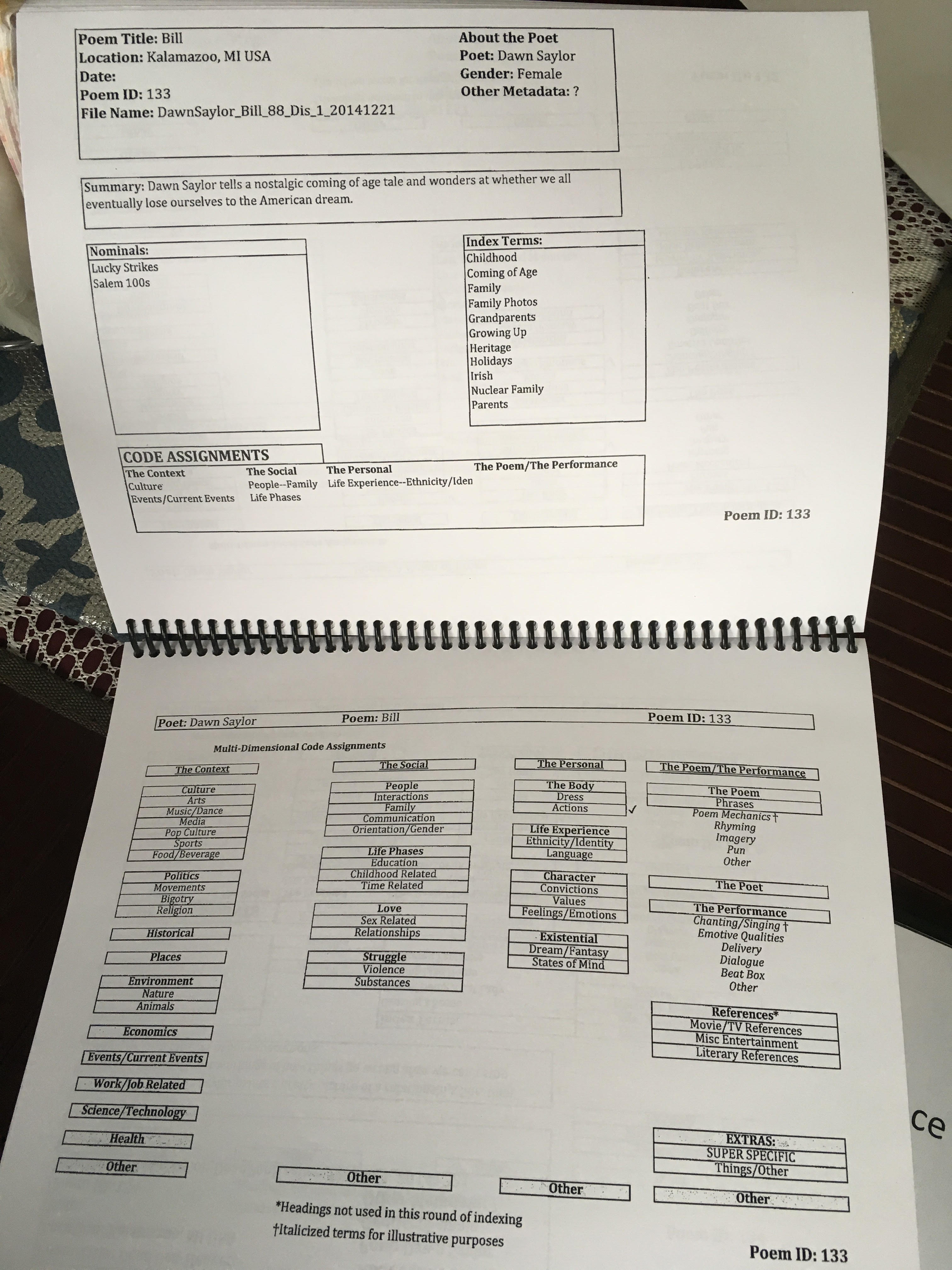Submitted by Mongo on

Many people are surprised to learn that the bulk of all historically preserved information in the world might as well not exist, because there is no way find and use it.
Librarians often refer to these as "hidden collections": those vast storehouses of materials that may be safe and preserved within their institutions, but remain totally inacessible to the public because they have not been catalogued or indexed in any useful way. After all, what good is a document that sits in a box on a shelf and can never be found by people that need it? And what good is a recording of a historically important slam team, that nobody can find or hear or see?
From the very beginning, P4 was determined that our collection of slam poetry history would not become another "hidden collection." We are dedicated to ensuring that not only do we collect and preserve the history of the poetry slam movement, but that we also catalog and index it in such a way that it becomes a truly useful research archive. Our vision of this material includes it being mined and used, not only by the public, but by scholars in fields as diverse as political science, sociology, gender studies, history, and on and on.
So, how do we ensure our collection is as accessible as it can be? Why, we ask for help, of course!
Soon after we began, P4 formed an alliance with the Randforce Associates, experts in creating search and access methodologies for audio and video content. With their help, a year ago we performed an indexing "test run", using 20 volunteers (thank you!) and more than 200 sample recordings. Based on a system designed by Randforce and P4, we collected indexing data from our volunteers on this large number of pieces, which Randforce then analyzed for "domains of meaning". A sample of the result is pictured here.
Each poem was assigned a series of code values, based on content, in areas such as the context of the piece (culture, politics, history, environment, economics, etc.), as well as social, personal, and performance qualities. The end product of this test was a huge amount of data, that has allowed P4 to refine our appoach to how we index and code the performances in our collection.From here, we will be working through early 2017 on integrating this subjective indexing approach with the more objective information in our materials catalog (poet name, recording date, poem title, album title, venue, etc.). Our goal is that by mid 2017 we'll be able to demonstrate a sophisticated search and retrieval methodology, that will truly unlock the potential of this amazing collection.
For instance, imagine being able to access the P4 collection to answer questions such as these:
- How did poets in New York City respond to 9/11 differently than poets in San Francisco?
- What themes were poets tackling in regard to sexuality in 2000, and how was that different from the themes they were tackling in 2010?
- How did poems about race change nationwide, after the election of Barak Obama?
- When did "persona poems" become popular in slam? Are they as popular now as they were in the early years?
These are just a sample of the kinds of questions that scholars may use the P4 collection to explore.
Stay tuned throughout 2017, as we begin to make our catalog of materials available to the public!

